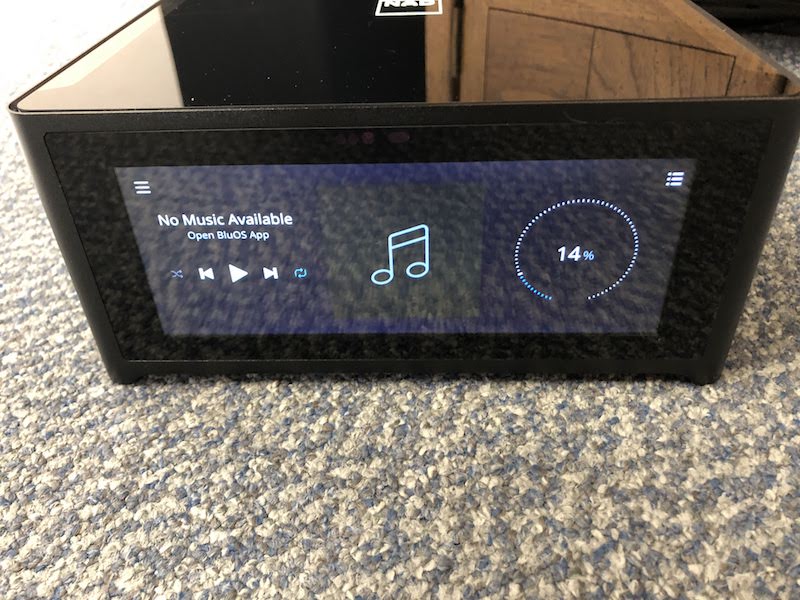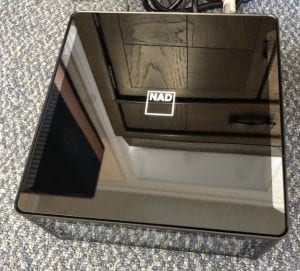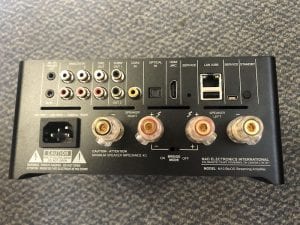NAD sent me their shiny new all-in-one streamer/amplifier to test drive. It’s sleek, sexy and sports 100 watts per channel. Coupled with Master Quality Authenticated (MQA) support and Dirac Live Room Correction, the M10 appears to be a proverbial Swiss Army knife. All of this functionality sounded too good to be true. I set off to find out if it would live up to the hype.
Unboxing
The packaging is beautiful, and it all looks and feels like a premium priced product. The M10 ships in a smudge repelling cloth drawstring bag with a collection of power cords, interconnects, and the Dirac Live Room Correction calibration microphone. A professional installer or savvy audiophile will be equally impressed with how well the parts are organized.
Installation of the NAD M10
The included Quick Start guide is pretty straight forward, and the connections are easy to make. I really like the hooded binding posts, ensuring bare conductors won’t short each other out.
I connected the power cord last and heard the M10 click to life.
The onboard touchscreen is beautiful and takes up the entire front of the unit. I love the absence of buttons and the user experience immediately appears well designed and thoughtfully implemented. Amplifiers can often be design nightmares, best hidden. The M10, however, begs to be front and center on a pedestal.
NAD M10 Configuration
The Quick Start guide prompted me to download the BluOS app and begin the setup process. The app wizard immediately detected the newly switched on M10 and started the download process. I could tell that the intended path wanted to find my Wi-Fi, duplicate the settings and seamlessly set things up wirelessly. After a few error messages, I guessed that connecting via Ethernet cable might be the best call. To be fair, the Quick Start guide shows a hardwired connection required from the beginning, but it’s fair to say that 2020 muscle memory has us all accustomed to wireless setups by now.
I further intuited setting up the Dirac Live Room Correction using the included microphone. I love this feature, and it made me feel like the listening sweet spot is really dialed in with so many measuring points. This part requires patience, but it pays off. Once completed, the room correction settings are saved on the amplifier and can be stored locally on a phone or backed up to the cloud.
The sound is amazing. I tested out a few MQA files from TIDAL, and they all blew me away. Other users have commented on the M10’s ability to expose flaws in the content, and I found this to be the case. Even at low levels, the sound is full and round with a sense that you’re in the music.
Final Report on NAD M10
If you have a single room and a nice set of speakers, the NAD M10 BluOS Streaming Amplifier checks a lot of boxes. You’d need three to four separate components to accomplish what this streamer/amplifier does in a single box.
My hat’s off to their industrial design and user experience blending together seamlessly. They’ve packed so much functionality inside the M10, it was challenging to review it all, especially the BluOS multi room functionality which I didn’t evaluate. The price tag is a little steep at $2,749.99, but I understand. You get what you pay for. I’ve searched for years trying to find a single component that can deliver on my 2-channel high resolution audio addiction, and I finally found it. The M10 is a keeper.












